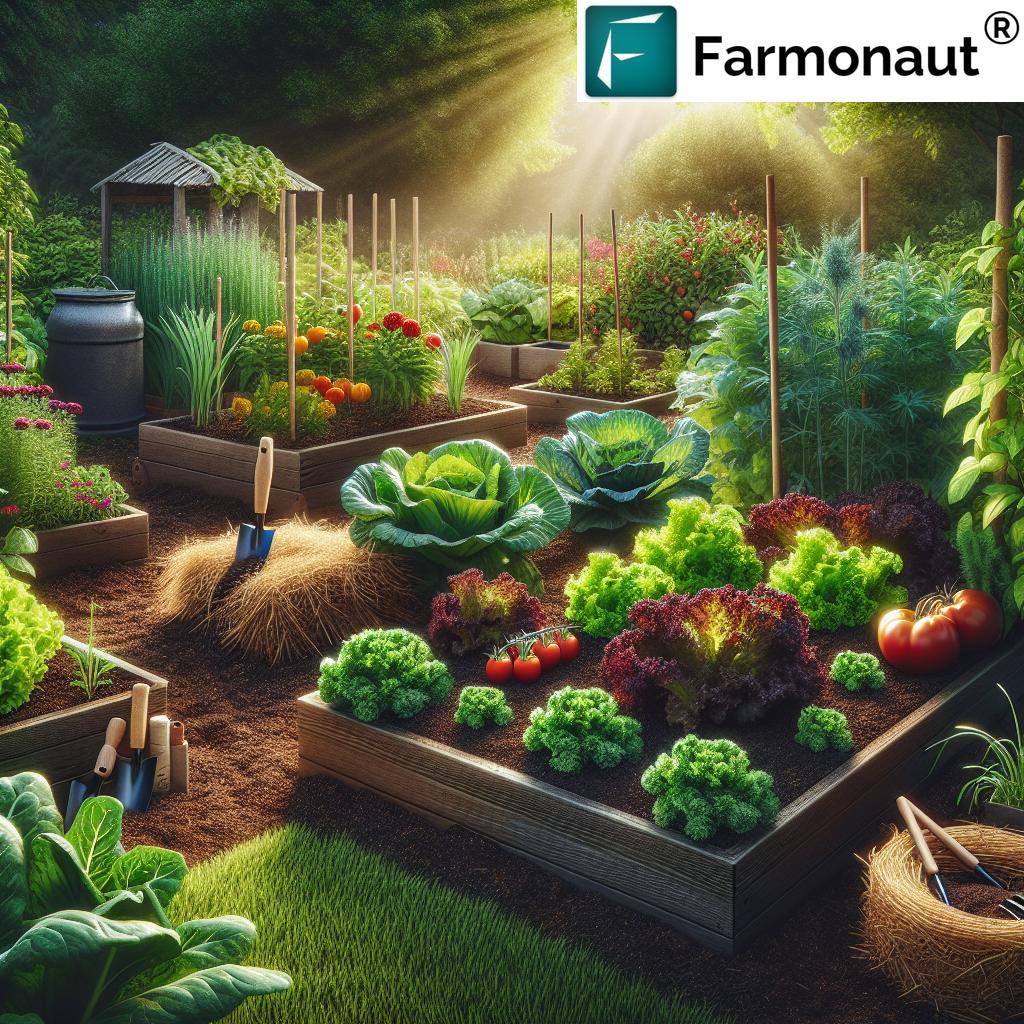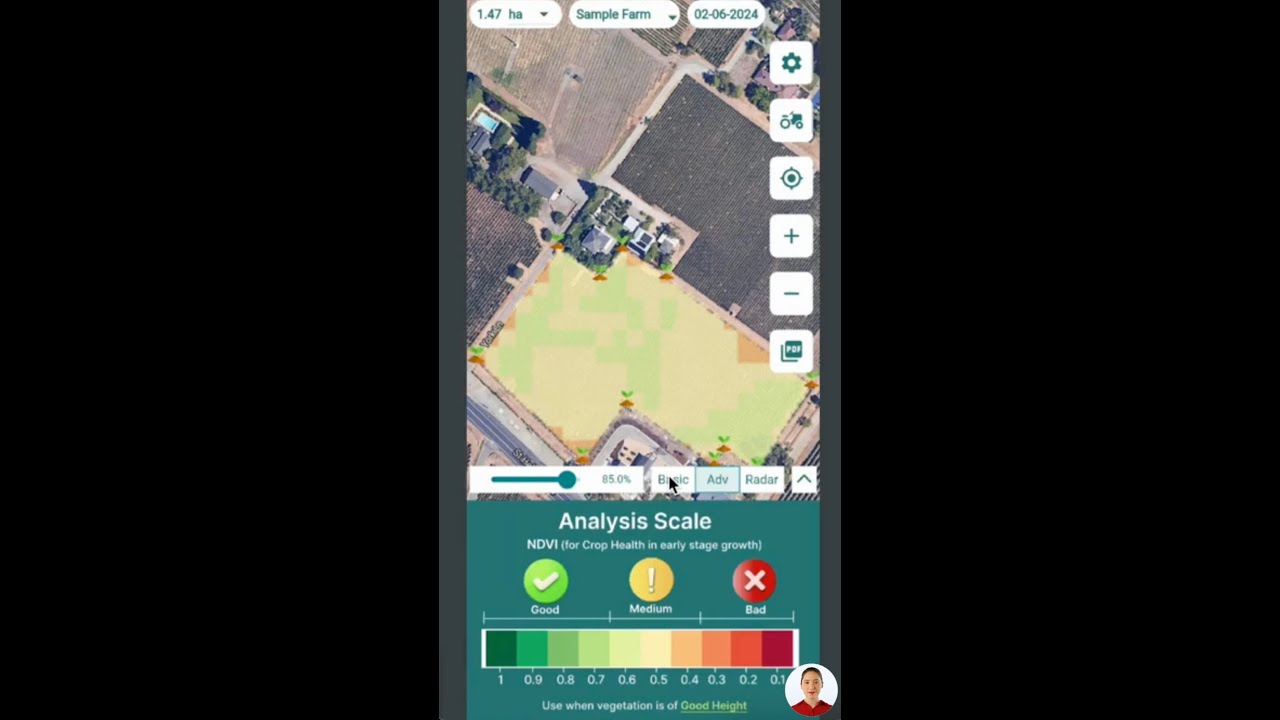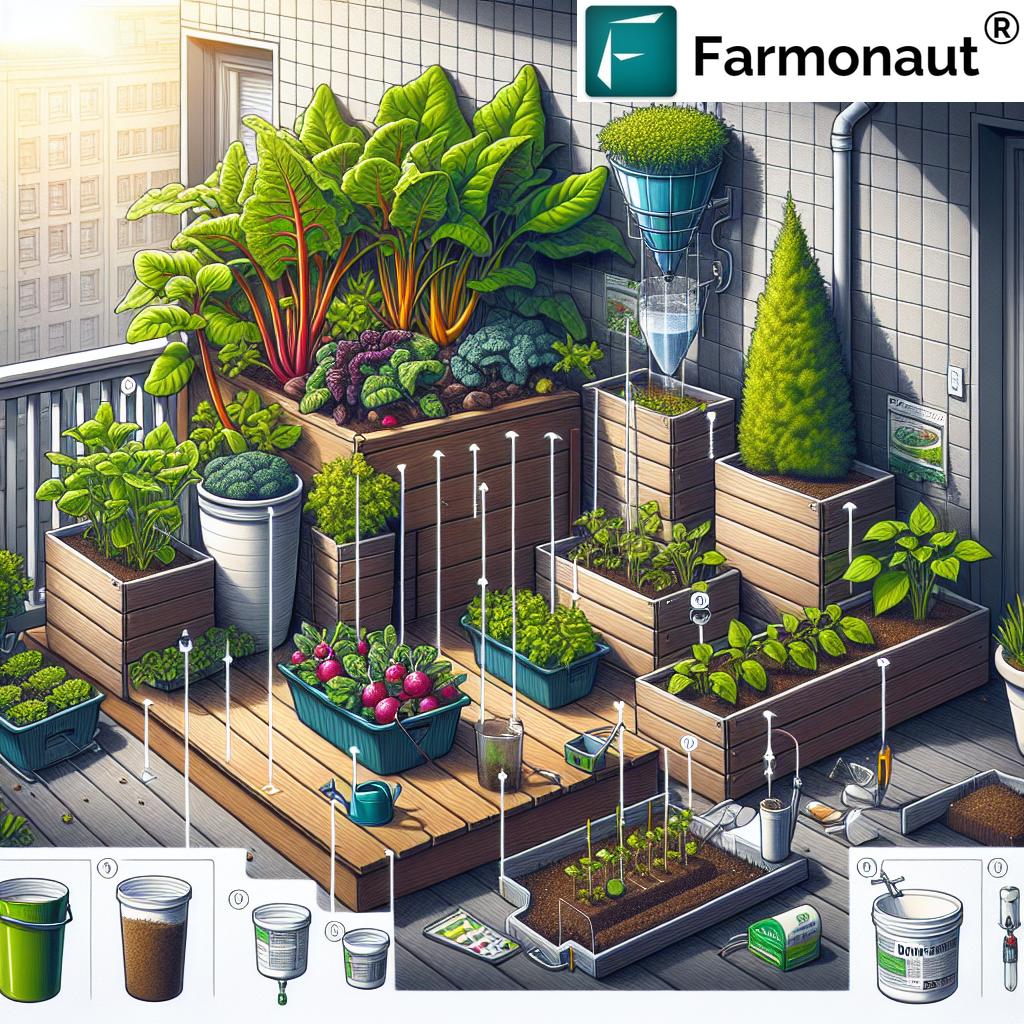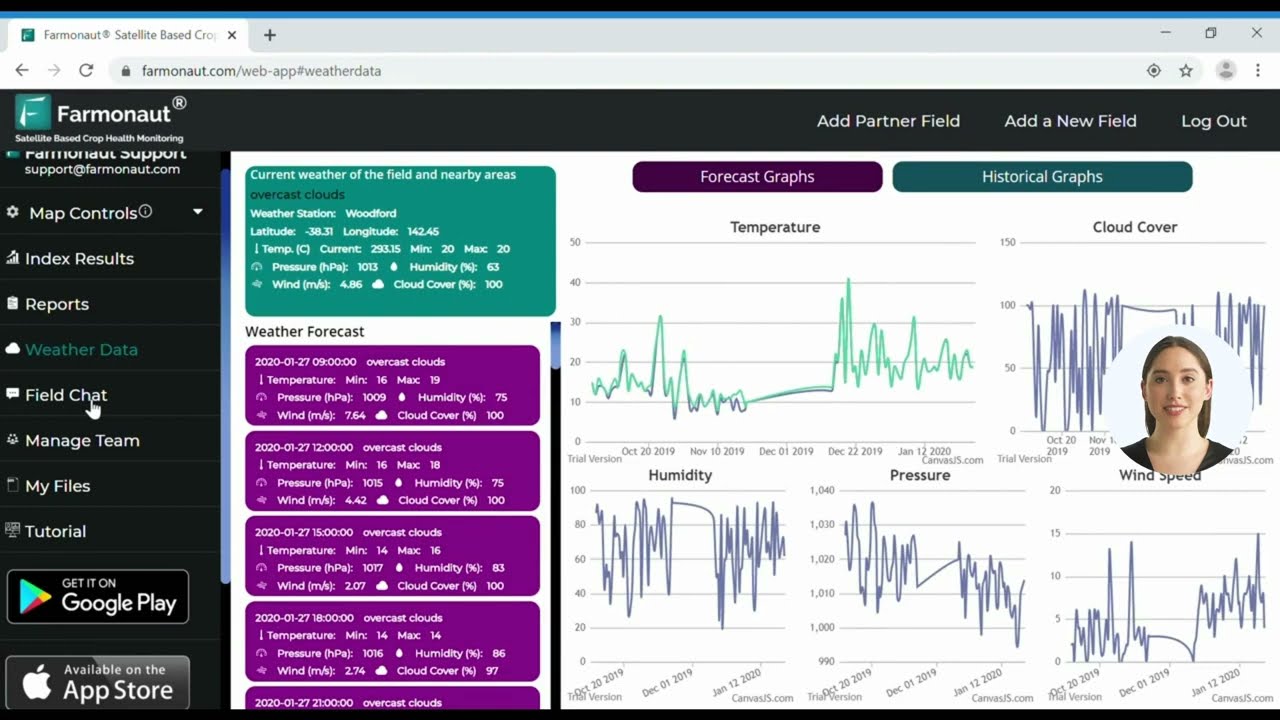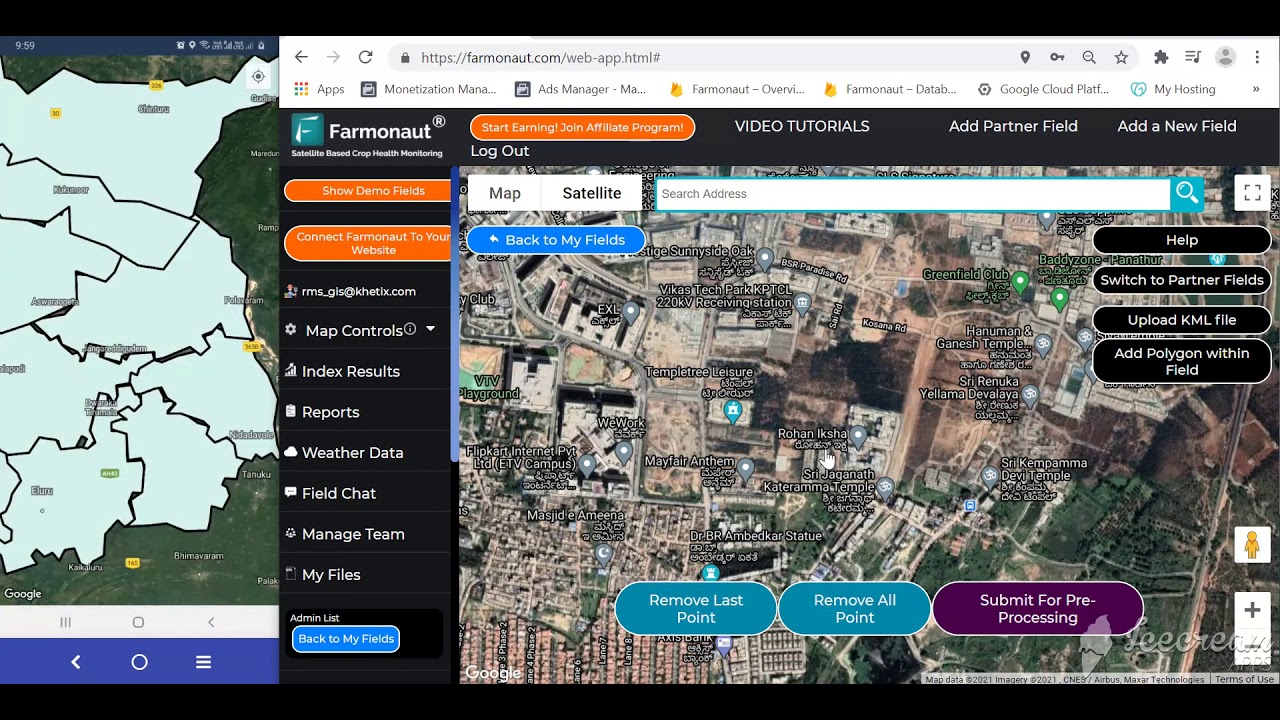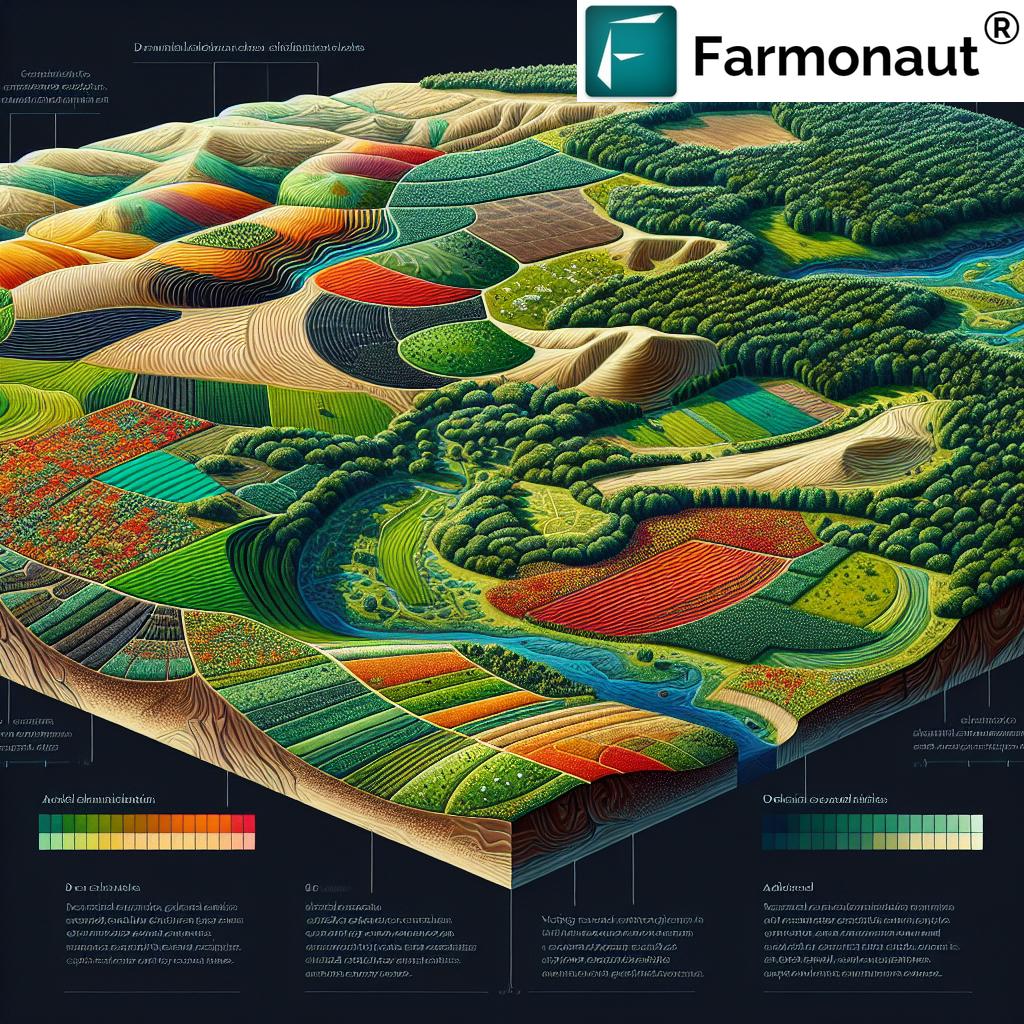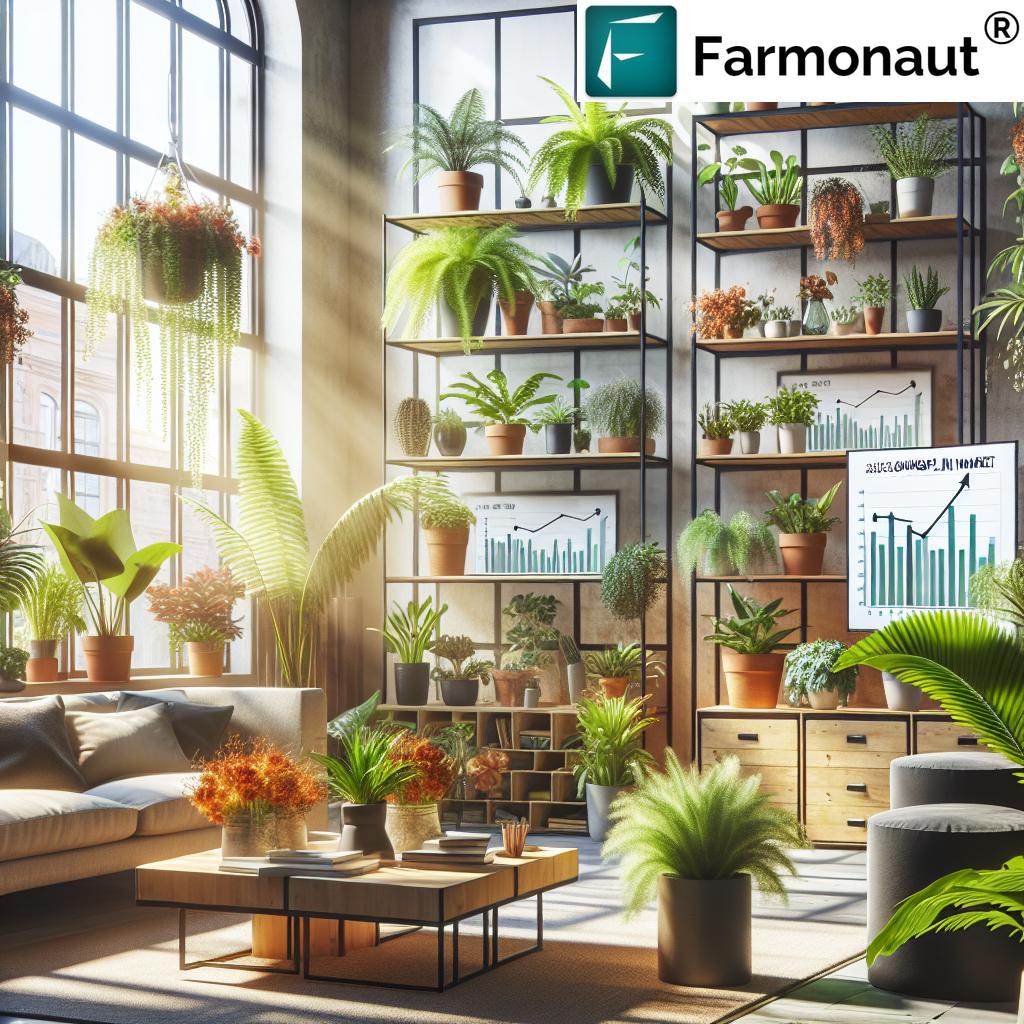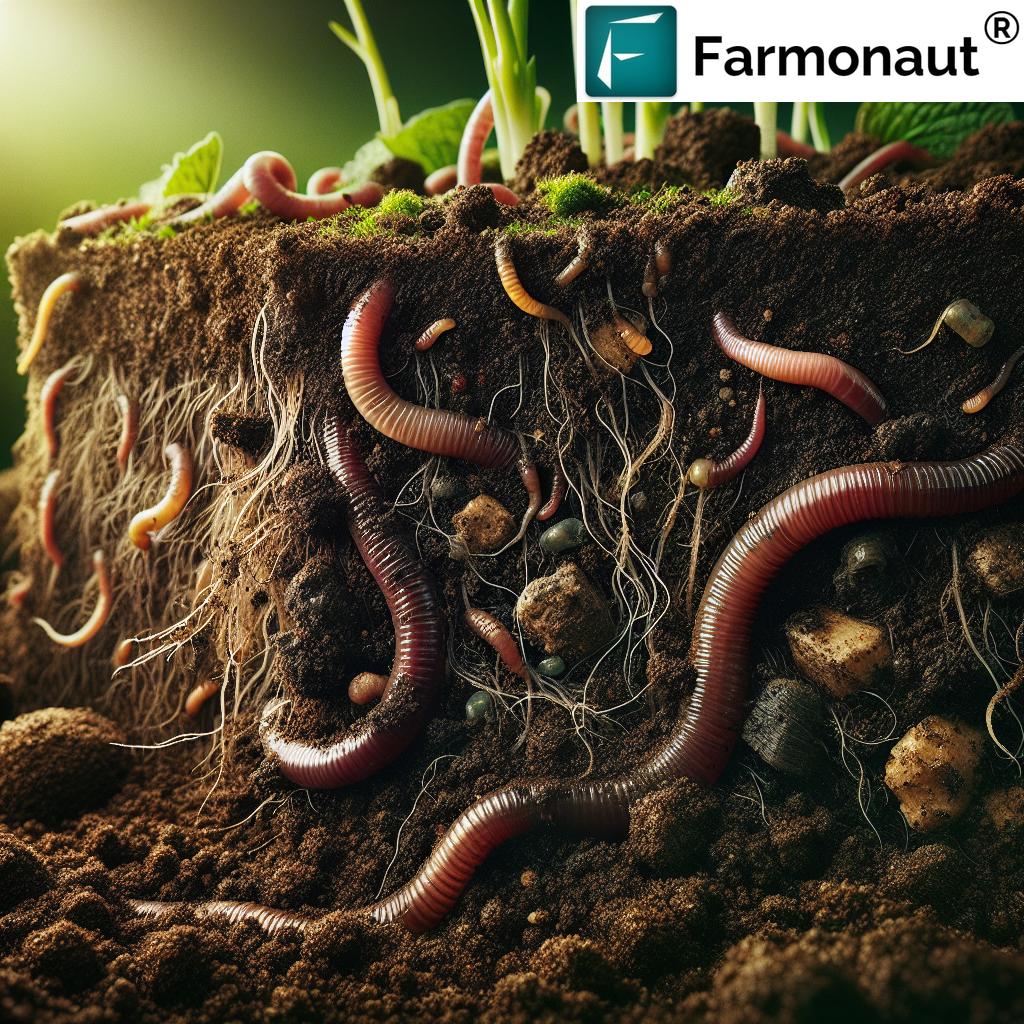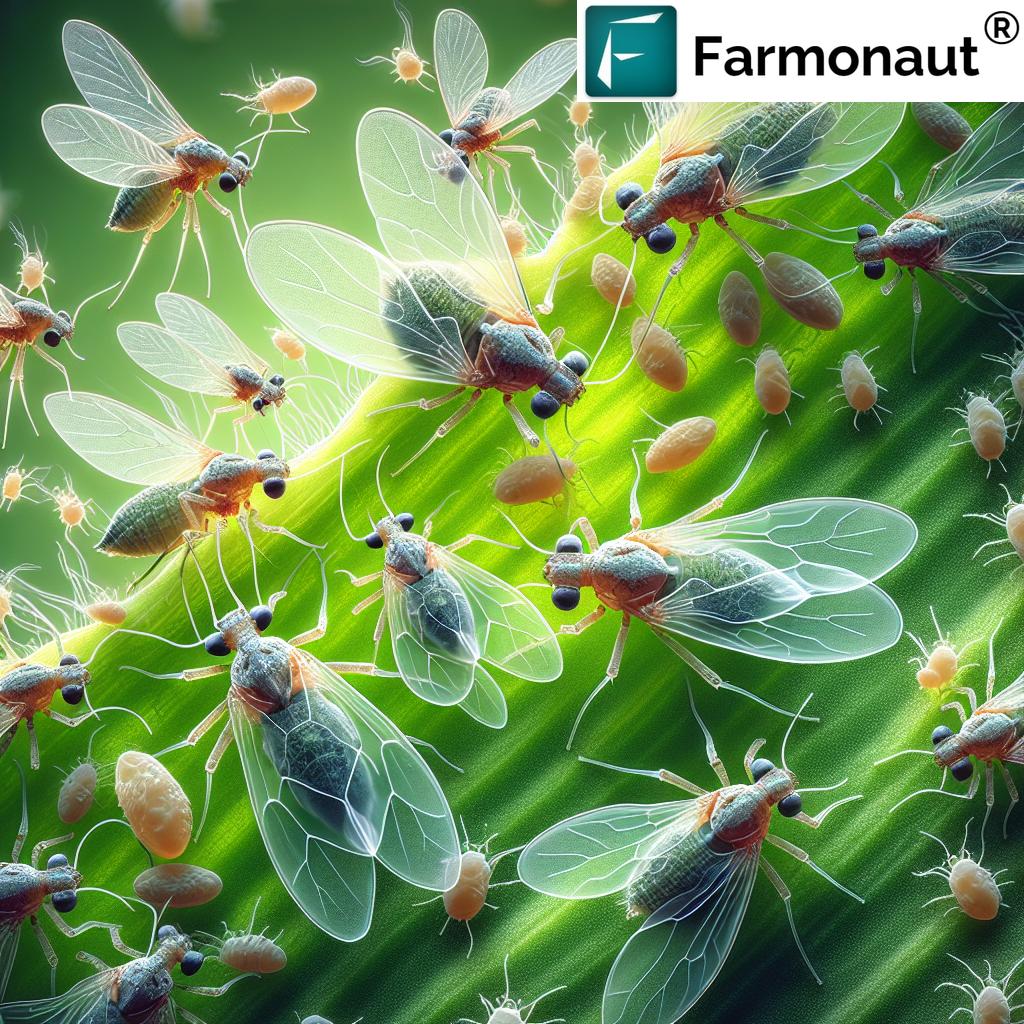Table of Contents
- Introduction: Garden Tips Appcyard – Boost Soil & Plant Health
- Optimize Your Garden’s Location for Maximum Sunlight
- How to Improve Soil Quality for Healthy Plants
- Efficient Watering Practices for Gardens
- Mulching Techniques for Moisture Retention
- Creating Portable Potting Stations for Convenience
- DIY Garden Markers: Practical & Eco-Friendly
- Companion Planting Benefits & Examples
- Natural Pest Control Methods
- Grow Edible Flowers for Beauty & Produce
- Vertical Gardening Ideas for Maximizing Space
- Best Plants for Small Gardens & Beginners
- Testing and Amending Soil pH: Stay Informed & Adapt
- Gardening Techniques & Benefits Comparison Table
- Farmonaut: Empowering Precision Gardening
- Frequently Asked Questions
- Conclusion: Your Path to a Thriving Garden
“Healthy soil can increase plant yield by up to 50% when combined with proper watering and companion planting techniques.”
Garden Tips Appcyard: Boost Soil & Plant Health
Gardening is more than a hobby; it’s an enriching journey that strengthens our bond with the earth while rewarding us with fresh produce and vibrant landscapes. Whether you’re a seasoned gardener or just starting to plant your first seeds, knowing the right gardening tips and techniques can make all the difference. In this comprehensive guide, we’ll share precise, step-by-step advice on optimizing your garden’s location, improving soil quality, implementing efficient watering practices, and much more—ensuring your plants thrive under every condition.
Optimize Your Garden’s Location for Maximum Sunlight
Selecting the right spot is the first step to garden success. Most vegetables, flowers, and fruit-bearing crops require at least six to eight hours of direct sunlight daily. Adequate sunlight not only powers photosynthesis but also ensures higher yields and vibrant health for your plants.
Key Steps:
- Evaluate Sun Exposure: Prioritize south or west-facing areas for planting beds or garden plots.
- Use Movable Containers: Growing lettuce, kale, and chard in containers gives flexibility. You can reposition pots as needed for maximum sun exposure.
- Work with What You Have: If your garden receives limited sun, focus on shade-tolerant crops to ensure growth—lettuce, kale, and chard thrive in less sunshine.
Choosing the optimal location is a cornerstone among garden tips and techniques for boosting plant health. You may also consider vertical structures to catch afternoon sun or plant taller crops to the north so that they don’t shade smaller plants.
How to Improve Soil Quality for Healthy Plants
The health of your soil is the backbone of a thriving garden. Healthy, living soil supports strong root systems, richer yields, and robust resistance to diseases. Here’s how to improve soil quality and fertility:
Test and Amend Soil pH
- Testing Soil pH: Use a simple test kit to determine if your garden soil is acidic, neutral, or alkaline (pH 6-7 is generally best for vegetables).
-
Amending as Needed:
– For acid-loving plants (like pepper plants), add amendments such as a few safety matches to the hole to gently acidify.
– For alkaline soils, incorporate natural compost to balance pH.
Build Soil Structure with Organic Matter
- Compost: Regular application of organic matter like compost boosts nutrient availability, aeration, and water retention.
- Avoid Heavy Clays or Sandy Soils: Blend in compost or well-rotted manure to enhance texture and structure, making your garden ready to support vigorous growth.
Using soil labeled for vegetable use ensures a proper nutrient balance essential for roots, stems, and leaves.
Efficient Watering Practices for Gardens
Water is life for any garden. Efficient watering practices ensure your plants absorb what they need, when they need it, and reduce waste. Systems such as drip irrigation and early morning watering routines are recommended in most gardening how-tos.
Best Watering Practices
- Water Early: Aim to water your garden in the early morning, so plants can absorb moisture before the day’s heat.
- Consistent Schedule: Most gardens require about one inch of water per week. Adjust for local weather conditions or plant types.
- Target the Roots: Use drip irrigation systems to deliver moisture directly to the root zone.
- Check for Water Stress: Wilting, dry leaves, and slow growth are signs to monitor your watering techniques.
Smart irrigation not only conserves this resource but results in healthier, more resilient gardens. For more advanced weather-based scheduling solutions, Farmonaut’s Jeevn AI Advisory System offers tailored insights by analyzing real-time field and weather data, helping farmers and gardeners make informed decisions.
Mulching Techniques for Moisture Retention & Soil Health
Effective mulching techniques serve multiple purposes: retaining soil moisture, suppressing weeds, and regulating temperature—essential for consistent plant growth across varying conditions.
Types of Mulch & Application Tips
- Organic Mulches: Use shredded leaves, straw, or shredded cardboard to cover soil at least 2 to 3 inches deep.
- Reduce Watering Needs: Mulch acts as a protective layer, reducing evaporation and thus watering frequency.
- Suppress Weeds: A thick mulch blocks light and makes it difficult for weeds to emerge.
- Enhance Soil Structure: Over time, organic mulches break down into nutrient-rich compost, boosting soil quality.
Explore more on weed suppression and improved moisture retention at Dian Farmer. Mulching is among the most impactful gardening techniques for both small and large spaces!
Creating Portable Potting Stations for Convenience
Gardening is much easier with a handy work area, especially when you’re transplanting crops or starting seeds. A portable potting station offers mobility and efficiency for every gardener.
- Wheelbarrow Potting Surface: Create a stable workspace by fitting plywood onto a wheelbarrow’s back end and securing it with cleats.
- Benefits: Easily move your potting station anywhere in the garden; keep tools and potting mix at hand.
For step-by-step instructions, visit Everything Backyard.
DIY Garden Markers: Practical & Eco-Friendly
Remembering what you’ve planted is crucial, especially as seedlings sprout. DIY garden markers are a sustainable, cost-effective solution for tracking plantings and crops.
- Stone Markers: Paint rocks with acrylic colors, label them with plant names, and finish with a clear coat for weather resistance.
- Other Ideas: Reuse bamboo sticks, old spoons, or wooden pins to mark rows of lettuce, kale, radishes, tomatoes, or any garden variety.
Check more creative options at SeedsNow Gardening Hacks.
Companion Planting Benefits & Examples
Companion planting is a powerful technique for boosting garden productivity and managing pests naturally. By interplanting species that benefit each other, you can improve soil quality, suppress weeds, and promote healthy, resilient systems.
Popular Companion Planting Combos:
- Lettuce & Tomatoes: Grow lettuce and radishes beneath tall tomatoes or squash—this suppresses weeds and preserves soil moisture.
- Marigolds & Vegetables: Plant marigolds to deter nematodes and other garden pests, using natural pest control methods.
- Kale, Chard & Herbs: Combining leafy greens and aromatic herbs improves resilience and flavor, supporting each other’s nutrient needs.
Find detailed “companion planting benefits” and suitable partners for various crops.
Natural Pest Control Methods
Every gardener faces pests, but there are eco-friendly ways to deter and manage unwanted visitors without harming the environment.
- Copper Tape: Place at plant bases (especially for leafy greens and vegetables) to repel slugs.
- Boiling Water: Pour over isolated weeds to kill them naturally, without chemicals.
- Vinegar & Salt Solutions: Use only in small, targeted areas for rapid weed suppression.
- Marigolds: Plant throughout the garden or in containers to repel pests and pathogens.
Review “natural pest control methods” for your specific crops and climate.
Grow Edible Flowers for Beauty & Produce
Edible flowers add both color and culinary value to any garden. Among our favorites: squash blossoms. Their golden glow enlivens beds and their sweet, mild flavor is excellent in salads or cooked dishes.
- Plant squash where it enjoys maximum sunlight.
- Harvest blossoms while still closed, ideally in the morning when moisture is high.
Other options include nasturtiums, calendula, and chive flowers. Discover ideas for edible blooms at SeedsNow Growing Tips.
Vertical Gardening Ideas for Maximizing Space
If space is limited or you want to intensify production, vertical gardening is a smart approach. This technique supports beans, tomatoes, cucumbers, and squash, optimizing growing areas for healthier crops and improved airflow.
How to Implement:
- Trellises: Suitable for cucumbers, beans, and vining squash.
- Cages/Vertical Planters: Use tomato cages or stacked pots for lettuce, chard, and herbs.
- Benefits: Saves garden space, improves sunlight exposure, reduces soil-borne disease, and makes harvesting easier.
Try these “vertical gardening ideas” in patios, balconies, or urban gardens where every inch counts.
Best Plants for Small Gardens & Beginners
Choosing the right crops makes a big difference—especially for beginners seeking rewarding results. Here are the best plants for small gardens and those new to gardening:
- Salad Greens: Lettuce, kale, and spinach—easy, quick-growing, and ideal for continuous harvests.
- Herbs: Basil, mint, parsley—adapt to many conditions, flourish in containers, and enhance any meal.
- Radishes: Among the fastest-maturing crops, perfect for interplanting.
For further guidance on growing lettuce and kale successfully, follow local weather cues and stabilize soil moisture for crisp, tender harvests.
Testing and Amending Soil pH: Stay Informed & Adapt
Gardening is a dynamic process. Staying informed about climate conditions, pest outbreaks, and soil pH is crucial for successful gardens. Testing and amending soil pH regularly ensures your soil conditions are ideal for a variety of crops and flowers.
- Observe Changes: Frequent observations help you adjust watering, mulching, or companion planting as needed.
- Record Results: Track your soil’s health, plant growth, and weather responses using a gardening journal or app.
Modern technology can help gardeners respond quickly to challenges. Platforms like Farmonaut enable data-driven approaches for ongoing learning and adaptation—see below for game-changing digital solutions.
Gardening Techniques & Benefits Comparison Table
| Technique | Step-by-Step Procedure | Estimated Time/Season | Soil/Plant Impact | Expert Tip |
|---|---|---|---|---|
| Mulching |
|
Spring/Fall (initial) and as needed | +20% moisture retention -15% weed growth |
Use organic mulch for added nutrients as it decomposes. |
| Drip Irrigation |
|
Install in spring Use all season |
+30% watering efficiency Healthier roots |
Regularly check emitters for clogs. |
| Companion Planting |
|
Plant with main crops, rotate as needed | Improved soil health Natural pest deterrence |
Mix herbs and flowers among vegetables for maximum effect. |
| Portable Potting Station |
|
Create any season Use year-round |
Speeds planting; reduces mess | Store extra seedlings and tools underneath. |
| Natural Pest Control |
|
As pests appear; season long | Reduces pest population Preserves soil fauna |
Target only affected areas with natural sprays. |
| Vertical Gardening |
|
Start in spring; continue as plants grow | +25% space use; improved air flow | Regularly secure vines for best results. |
Farmonaut: Empowering Precision Gardening and Farming
We at Farmonaut are committed to empowering gardeners, farmers, and agribusinesses with affordable, advanced technology. By integrating satellite-based monitoring, AI-driven crop advisory, blockchain traceability, and intelligent resource management, we help users make smarter, data-driven gardening and farming decisions.
Find out more about our solutions:
- Real-Time Crop Health Monitoring: Our platform leverages multispectral satellite imagery to detect crop health issues, measure soil moisture levels, and guide efficient watering and fertilizing. This enables the implementation of sustainability strategies and carbon footprinting—essential for modern gardening and farming.
- AI-Powered Advisory: The Jeevn AI system delivers tailored tips and weather-based recommendations, optimizing practices for local conditions so you can thrive each season.
- Blockchain Traceability: For those distributing produce or interested in supply chain integrity, our traceability solutions guarantee transparent, secure product journeys from seed to sale.
- API Access for Developers: If you’re a developer or enterprise, our API endpoints and detailed API Developer Docs can power your own apps or platforms with accurate satellite and weather data.
- Resource & Fleet Management: Large-scale growers can optimize logistics and machinery with our fleet management tools and monitor entire plantations through large scale farm management apps.
- Crop Loan and Insurance Support: With satellite-based verification for crop loans and insurance, facilitators and farmers can streamline applications and reduce risk.
Our mission is to make data-driven, precision agriculture accessible for all—gardeners included!
Frequently Asked Questions
How can I tell if my soil is healthy?
Healthy soil is dark, crumbly, and teeming with earthworms and microfauna. Test your soil’s pH, check for adequate moisture retention, and periodically add organic matter to improve its structure.
What are the most efficient watering practices for gardens?
Water in the early morning, use drip irrigation systems to deliver water to the roots, and mulch to reduce evaporation. Monitor your crops’ requirements—about one inch per week is a good baseline.
How does companion planting benefit my garden?
Companion planting encourages biodiversity, reduces pest outbreaks, improves soil health, and increases yields, especially when combining low-growing greens with taller, sun-loving vegetables.
Can Farmonaut help home gardeners?
Absolutely! We at Farmonaut provide accessible crop health monitoring, weather–AI-powered advisories, and resource management tools that suit gardens of every size—for both commercial and home application.
What’s the best mulch for vegetable gardens?
Organic materials like shredded leaves, untreated straw, and composted bark are ideal. They improve soil moisture retention, suppress weeds, and add nutrients as they break down.
Is vertical gardening only for small spaces?
No, vertical gardening is beneficial for all garden sizes. It maximizes output per square foot, increases air circulation, and makes harvesting easier for crops like cucumber, beans, and tomatoes.
How can I access Farmonaut’s services?
Download our app for Android or iOS, use the web platform, or explore API integration on our API page and API Developer Docs.
Conclusion: Your Path to a Thriving, Healthy Garden
A lush, productive garden is within everyone’s reach with the right guidance. By selecting the optimum location, building up your soil’s health, mastering watering techniques, and integrating modern technology for monitoring and decision-making, you can unlock nature’s full potential. Combine traditional wisdom such as companion planting and organic mulching with innovative solutions from Farmonaut to garden smart—no matter your plot size or experience.
Remember, successful gardening is a journey. Observe, experiment, and adapt…and your garden will thrive season after season!


